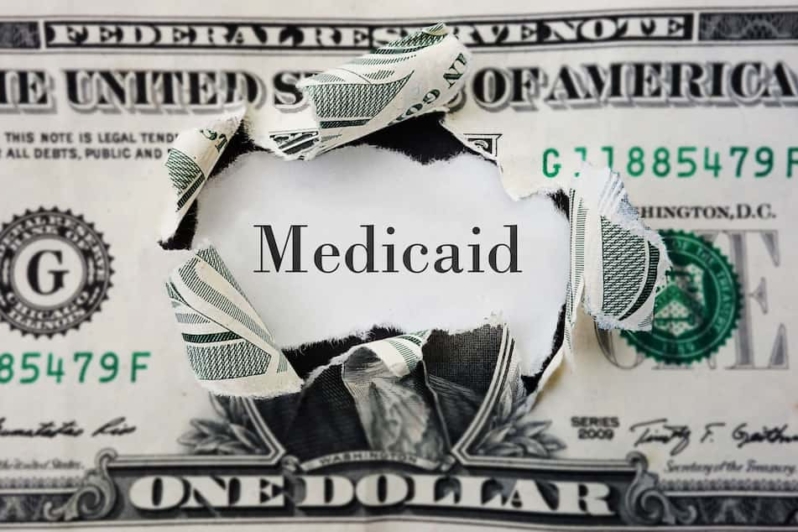Using Estate Planning to Prepare for Medicaid
Long-term care involves not only a loss of personal autonomy; it also comes at a tremendous financial price. Proper planning can help your family prepare for the financial toll and protect assets for future generations.
Posted on February 8, 2021

Long-term care can be very expensive, especially around-the-clock nursing home care. Most people end up paying for nursing home care out of their savings until they run out, at which point they can qualify for Medicaid to pick up the cost.
Medicaid rules require that recipients have no more than $2,000 in "countable" assets (the figure may be somewhat higher in some states) and limited income. Any excess assets need to be spent down before you can qualify for Medicaid. In addition, in order to be eligible for Medicaid, you cannot have recently transferred assets. If you transfer assets within five years of applying for Medicaid, you may be subject to a penalty period during which you cannot receive benefits. After you die, Medicaid also has the right to recover from your estate, which in the case of a Medicaid recipient usually means only the house.
Careful planning in advance can help protect your estate for your spouse or children. If you make a plan before you need long-term care, you may have the luxury of distributing or protecting your assets in advance. This way, when you do need long-term care, you will quickly qualify for Medicaid benefits. The following are some tools that can be d in an estate plan to prepare for Medicaid:
- Trusts. One of most important estate planning tools you can use is an "irrevocable" trust -- a trust that cannot be changed after it has been created. In most cases, this type of trust is drafted so that the income is payable to you (the person establishing the trust, called the "grantor") for life, and the principal cannot be applied to benefit you or your spouse. At your death the principal is paid to your heirs. This way, the funds in the trust are protected and you can use the income for your living expenses. For Medicaid purposes, the principal in such trusts is not counted as a resource, provided the trustee cannot pay it to you or your spouse for either of your benefits. However, if you do move to a nursing home, the trust income will have to go to the nursing home. And to avoid Medicaid’s “look-back period,” the trust must be funded at least five years before applying for benefits. For more information on how to use trusts in Medicaid planning, click here.
- Annuities. Annuities are another tool married couples can use to prepare for Medicaid. An immediate annuity, in its simplest form, is a contract with an insurance company under which the policyholder pays a certain lump sum of money to the insurer and the insurer sends the policyholder a monthly check for the rest of his or her life. In most states the purchase of an annuity is not considered to be a transfer for purposes of eligibility for Medicaid, but is instead the purchase of an investment. It transforms otherwise countable assets into a non-countable income stream. As long as the income is in the name of the spouse who is not in the nursing home, it's considered non-countable. For single individuals, annuities are less useful, but if you transfer assets, you may be able to use an annuity to pay for long-term care during the Medicaid penalty period that results from the transfer.
- Protecting your home. After a Medicaid recipient dies, the state must attempt to recoup from his or her estate whatever benefits it paid for the recipient's care. This is called "estate recovery." For most Medicaid recipients, their house is the only asset available, but there are steps you can take to protect your home. Putting your house in a trust can be a good option, but once a house is placed in an irrevocable trust, you cannot remove it. Another option is a life estate, which is a form of joint ownership of property between two or more people. They each have an ownership interest in the property, but for different periods of time. The person holding the life estate possesses the property currently and for the rest of his or her life. The other owner has a current ownership interest but cannot take possession until the end of the life estate, which occurs at the death of the life estate holder.
Talk to your attorney about whether your estate plan should include preparation for possible Medicaid eligibility.
More from our blog…
What You Should Know About Long-Term Care
Research shows that roughly one in seven adults aged 65 or older will need long-term care at some point in their later years. Meanwhile, tens of millions [...]
Understanding Medicaid: What Does Medicaid Cover?
In the complex and frequently changing landscape of health care in the United States, Medicaid stands out as a vital program. Since 1965, it has [...]
Elder Financial Abuse: How an Elder Law Attorney Can Help
Elder financial abuse is a significant issue affecting many older adults nationwide. It involves someone exploiting or misusing an older person’s finances or assets for [...]
Does Medicare Cover Prescription Weight Loss Drugs?
Americans have a growing appetite for prescription drugs such as Ozempic, Wegovy, and Mounjaro. Originally developed to treat Type 2 diabetes, they are now exploding [...]
Recent blog posts

FREE WEBINAR
5 Things to Know About
Estate Planning
When You Turn Sixty-Five





